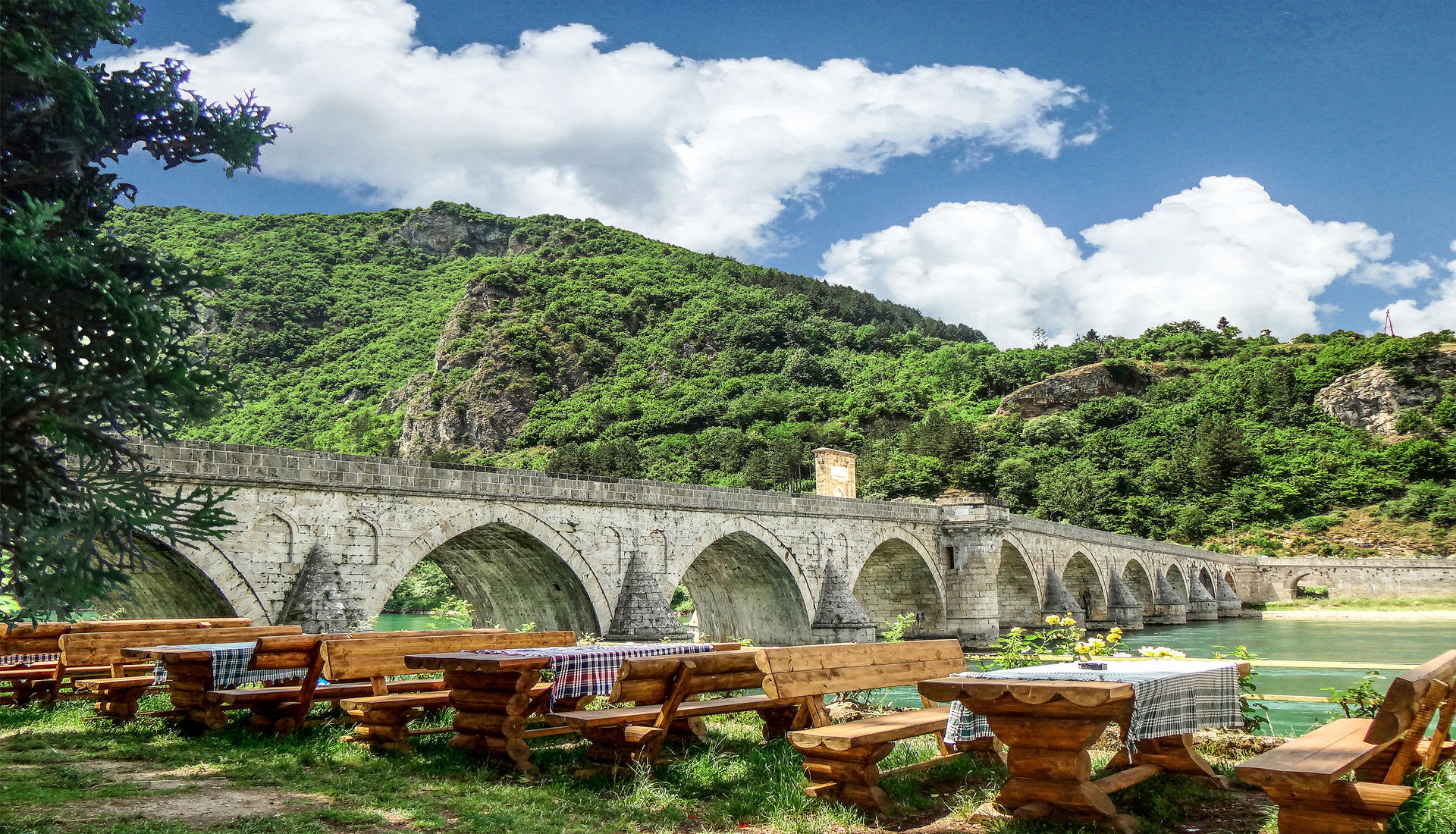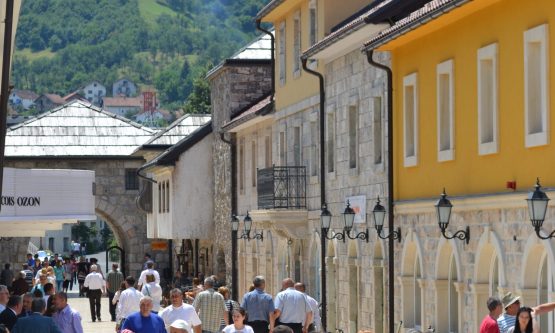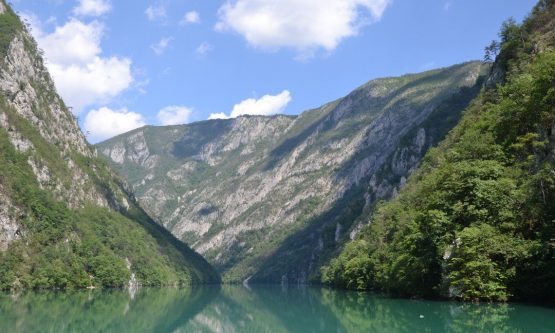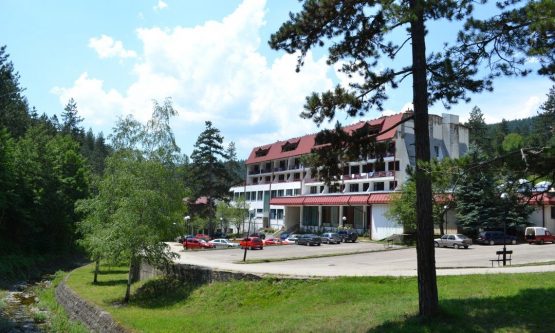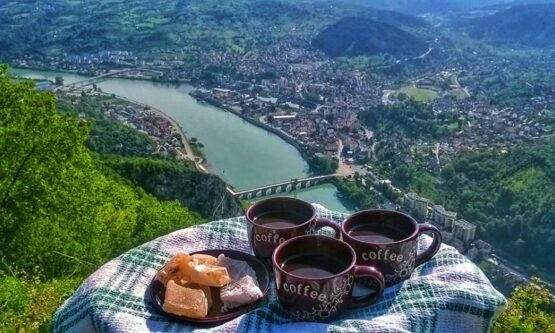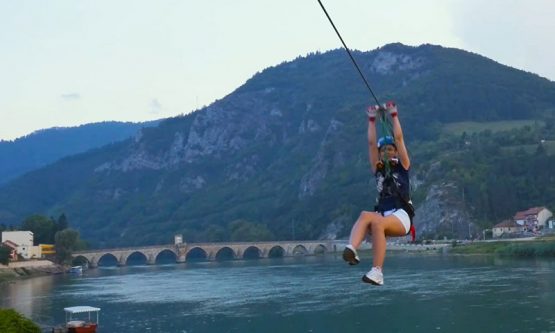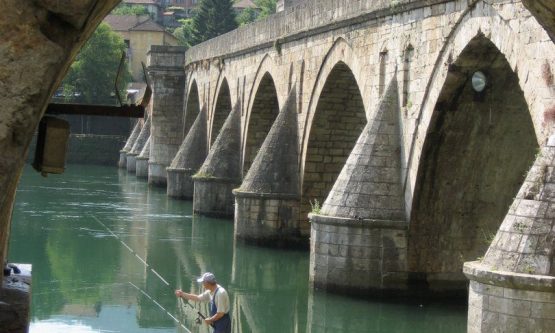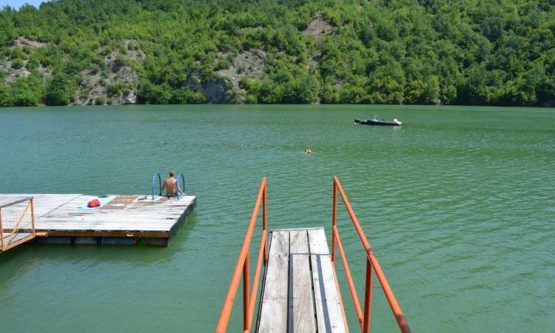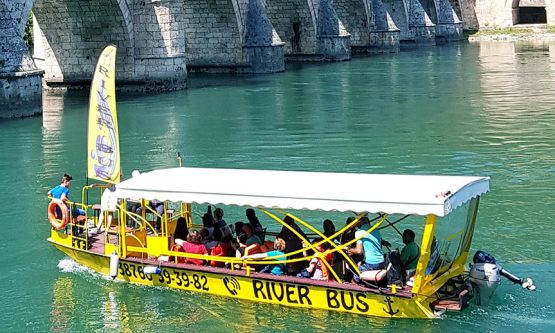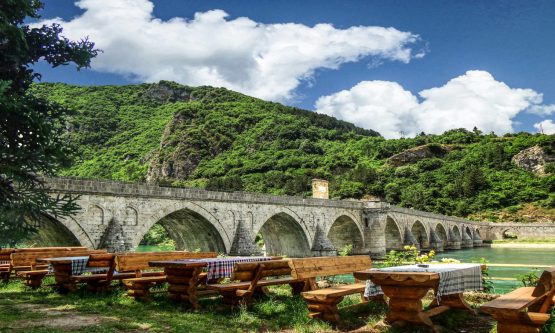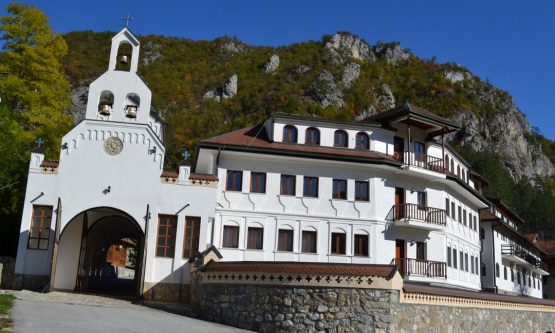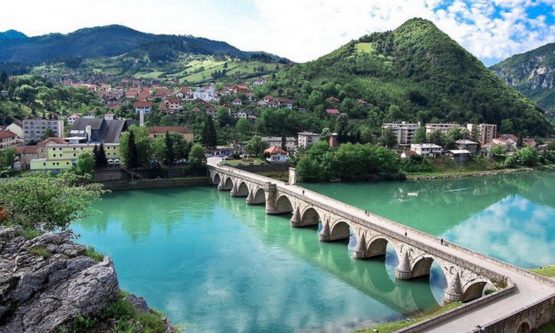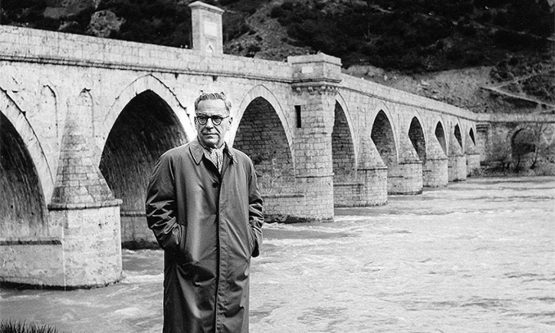Welcome to Visegrad
Visegrad is a place with soul. Whoever sets foot on Visegrad path feels the magic this town offers. However, those who visited this town willingly or accidentally speak the best stories about it.
Culture

Visegrad lies on rivers Drina ad Rzav. It became famous after 1571, when the bridge with 11 tall arcs was built, as an endowment of Turkish grand vizier Sokollu Mehmed Pasha. The bridge was built by the greatest builder of that time – Koca Mimar Sinan. This grandiose construction was described by Ivo Andric is his novel “The Bridge on the Drina”, for which he was awarded the Nobel prize for literature in 1961.
Nature
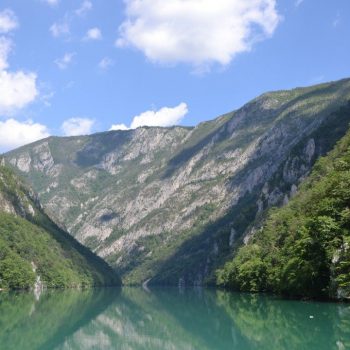
Natural beauty is also a characteristic of the Visegrad area. The highest peak of Tara – Veliki Stolac (1673m) is also in this municipality, together with forests of the famous Pancic spruce.
A true gem of this area is Visegrad Spa, with thermal water of 32 Celsius and old hammam (Turkish bathroom) made around the same time as the bridge. In 1906, a narrow-gauge railway was built through Visegrad that connected it to Mokra Gora, so even today it is possible to organize steam/diesel locomotive rides, which is a unique experience for all visitors.
Adventure
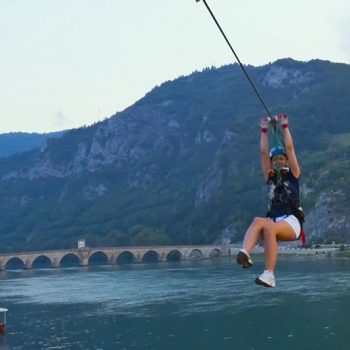
For the lovers of active vacation we suggest you try one of these suggestions… or all of them.
Hiking to the mysterious “Inscription Rock” – near Visegrad in village Zlijeb there is a rock on which the painted white signs have been enduring for centuries. The signs are similar to pictogram inscriptions from Neolithic period, while some experts believe they are “newer”, from the Roman period. Be that as it may, they are a mystery yet to be solved. Legend says there used to be a spring at that location which was closed by the locals, and water will flow from it again when someone manages to decipher the inscriptions on the rock.
One of the most beautiful rivers in the Balkans – known as Zelenika (green river) from the ancient times, Drina hides many incredible gems of nature such as waterfalls, underground springs and hidden caves in the canyon. Center for active tourism Canyon Adventures offers various different tours and adventures on kayaks or SUP boards. Pass beneath the old bridge’s arcs, paddle to Stari Brod for a barbecue and fulfill your whole day with adventure accompanied by experienced guides and instructors.
The most beautiful viewpoint of Visegrad is called Butko Cliffs, right next to the old bridge. The view from this point is incredible.
Upstream from the camp in Dobrunvik there is one of the most beautiful parts of Rzav that offers various types of active tourism, from kayaking and mountain biking to hiking.
Special adrenaline activity in Visegrad is around 500m long zip line. This activity is available throughout the entire year.
Two artificial lakes together with Rzav river are at fishermen’s disposal. In the town itself, upstream of the old bridge there is a 2km long fishing path, and it is also possible to fish from fishing boats. For those who have their own boats, it is best to place them right next to the bridge itself, on the left Drina bank.
We don’t encourage diving from the bridge, but you must try swimming in the river! The most neatly arranged beach is Jaz, located 12km upstream from Visegrad. Jaz offers a café bar, children’s swimming pool with playground and a camping site. Besides swimming in Drina, guests can rent canoes, pedal boats or motorboats.
Gastro

Gastronomic card of this area is inspired by the natural beauty of rivers Rzav and Drina, nature varieties of Tara slopes, Ottoman empire influence, old Serbian delicacies and hard working hosts. Summer patio of Visegrad hotel is surely the place you will visit for a coffee and a view of Visegrad bridge. Here you can also taste specialties of both domestic and international cuisine. Be sure to have Visegrad stew and famous buckwheat pie. In the Visegrad Spa restaurant at the old hammam you can order pie under bell made from integral flour. Restaurant Anika is famous for Drina fish specialties, restaurant Zlatna Moruna offers specialties of both domestic and international cuisine, and restaurant Kruna is a place for all gourmands with its rolled veal under bell and homemade dough rolls with kajmak. In eco camp Stari Brod there is a 50-seat restaurant that offers a fascinating view on Drina, together with lamb and veal under bell, all sorts of homemade pies and bread, Drina fish and barbecue. All this is prepared with much love and care. This area can be also experienced through traditional drinks, such as plum, pear and apple brandy made by domestic fruit sorts.
Tourist organization of Visegrad
Visegrad bridge
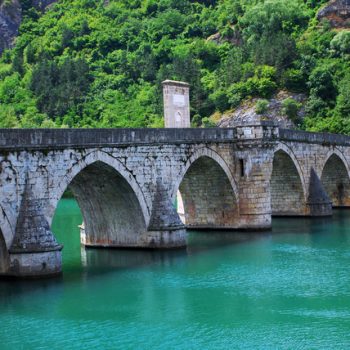
The bridge is one of the most important national monuments of Bosnia and Herzegovina. It is enlisted on UNESCO World Heritage list. It represents a state of the art work of the architecture of those times. Besides its architectural value, it became even more famous through “The Bridge on the Drina” novel of our only Nobel prize winner Ivo Andric. For all Andric lovers, it is an unforgettable experience to watch Drina from the bridge and read the novel on the bridge itself.
Andricgrad (Andrictown)
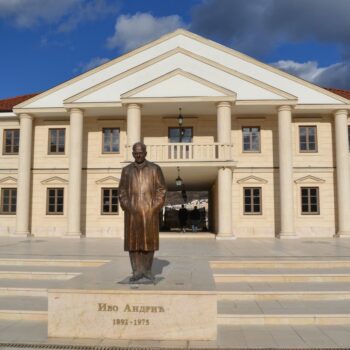
“A town inside a town” came into existence as an idea of prof. Kusturica about a stone medieval town inspired by Andric’s works and characters. It is actually a vision of how Visegrad would look if it was influenced by the Renaissance and similar historical periods. Take a walk through Andricgrad, visit “Lubarda” gallery in Andric’s Institute, see some of the blockbusters in “Dolly Bell” cinema, visit the gallery and souvenir shop with works of domestic artists, or have a dessert in “Delicija” pastry shop. If you prefer coffee or beer, there are café bar “Goya” and pub “Kod Svejka”.
Спомен-комплекс Стари Брод
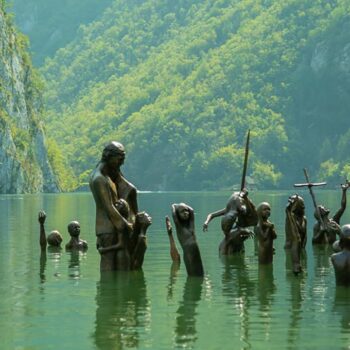
A memorial complex was built in the town of Stari Brod in Višegrad to commemorate the horrific crime of World War II that took place in the spring of 1942, when over 6,000 Serbs were killed there. During the Ustasha offensive, commanded by Colonel Jure Francetić, Serbian civilians from the areas of Sarajevo, Pale, Olovo, Sokoc, Kladnje, Han Pijeska, Rogatica and Višegrad fled towards Serbia. Due to the blockade of the bridge in Višegrad by the Italians, it was not possible to cross the Višegrad bridge, so the columns of refugees moved towards the villages of Miloševići and Stari Brod, in order to cross into Serbia by ferry. In this inaccessible terrain, the Ustasha awaited them and in the most brutal way killed, tortured, raped women and threw them into the Drina. This crime was kept quiet for more than half a century. Only in 2008 was a memorial to the victims erected in Stari Brod, a memorial chapel was dedicated in 2014, and a memorial museum was built in 2019.
The Stari Brod Memorial Museum features 27 sculptures with 39 figures, symbolizing the gathering and entry of Serbian mothers with children in their arms into the swollen Drina River. The conceptual design of the museum was done by architect Novica Motika from Zvornik, and the donors for the construction of the museum were Miodrag Davidović Daka and Spasoje Albijanić. Inside the museum are the few surviving photographs of the crime from 1942, as well as a list of the names of the victims. One of the specific details of the museum is a glass console built above the Drina River, six steps long, which symbolically represents the path of suffering, each step above the water representing a thousand victims. Until now, the only way to get from Višegrad to the Stari Brod Memorial Complex was by one of Višegrad’s tourist boats, or by tourist speedboat, and at the end of 2020, a new road to Stari Brod was opened along the left bank of the Drina River.
Visegrad Spa with hammam
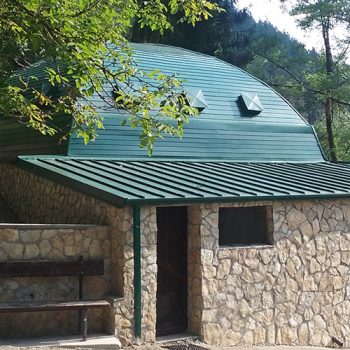
It is located 5km north of Visegrad in a thick pine forest. Thermal water has a temperature of 34⁰C. The water has a thermally optimal radioactivity, which is its primary healing characteristic. Hammam near the spa hotel was built in the same period as the bridge on Drina. Thermal water was discovered accidentally during digging. Hammam is still in use and can be rented in “Vilina Vlas” hotel for one hour of use.
Monastery Dobrun
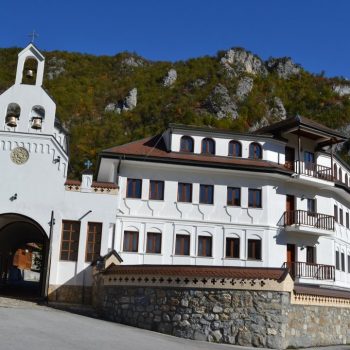
Also known as Krusevo, it is located in a picturesque mountain area on Visegrad-Uzice road, 12km away from Visegrad in rier Rzav canyon. It is dedicated to the Dormition of the Mother of God. It was built in 1343 and it was rebuilt many times. In the monastery complex there is the Museum of the First Serbian Uprising, gallery, as well the Museum of the Visegrad Metropolis.
Tour with “Water Ciro”

This tour is named after the popular “Ciro” train that used to pass on the narrow-gauge railway Uvac-Rudo-Sarajevo. This is a 50km water route that passes through Rudo, Visegrad and Gorazde in one of the most beautiful natural oases of Europe.


